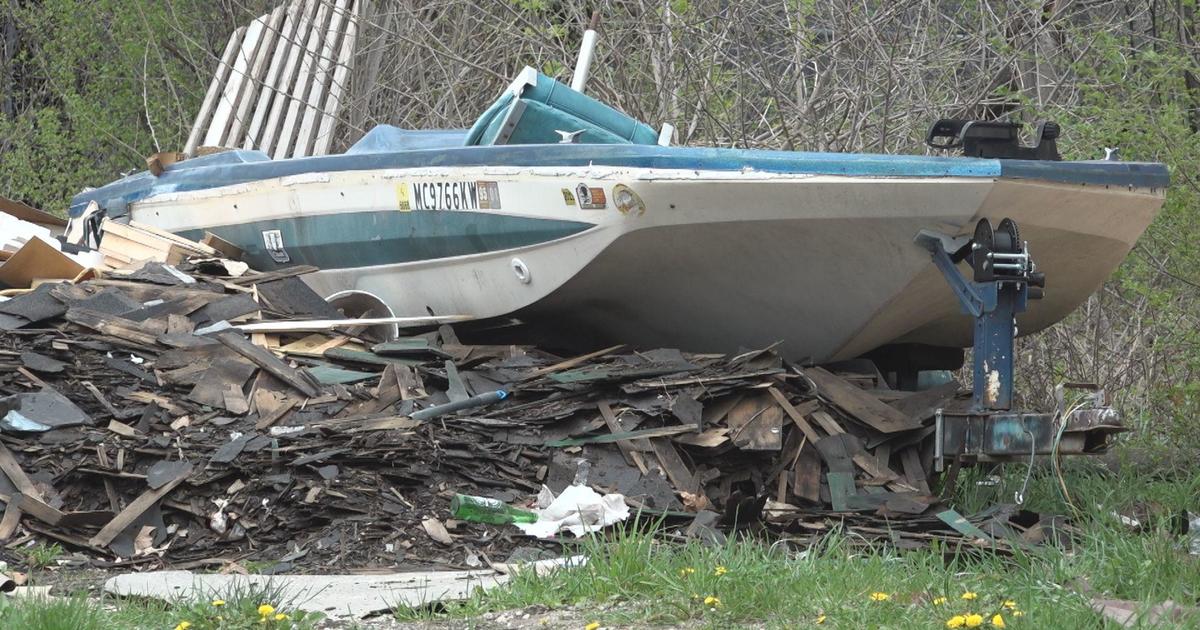Study: 3 Lake Erie Rivers Good Asian Carp Habitat
TRAVERSE CITY (AP) - Lake Erie and some of its biggest tributary rivers have just the right water temperatures and other characteristics needed for greedy Asian carp to make themselves at home, says a federal study released this week.
A paper by scientists with the U.S. Geological Survey says the Maumee River, which flows into Lake Erie at Toledo, Ohio, is a highly suitable area for Asian carp to lay their eggs. The Sandusky and Grand rivers are described as moderately suitable. Four others are less hospitable for the invasive fish but can't be ruled out, said Patrick Kocovsky, a fishery biologist based at Sandusky, Ohio.
"The potential certainly exists for Asian carp to spawn in tributaries of Lake Erie," Kocovsky said. "We are getting a clearer picture of the threat Asian carp pose to western Lake Erie, and that picture suggests there is cause for concern."
Bighead and silver carp gorge on plankton, the base of the aquatic food chain. Both were imported decades ago to cleanse Southern fish farms and sewage treatment lagoons of algae, but they escaped into the Mississippi River and have migrated northward since.
They have infested numerous tributaries of the Mississippi, including the Illinois River, and are threatening to enter Lake Michigan through a shipping canal near Chicago. The U.S. Army Corps of Engineers says an electric barrier in the canal is blocking their path, although DNA from Asian carp has been found beyond the barrier. Genetic material from the carp also has been found past a dam upstream from Minneapolis, suggesting many of Minnesota's most popular lakes might be at risk.
Scientists say if the carp gain a foothold in the Great Lakes, they could damage the region's $7 billion fishing industry by starving out native plankton-eating fish, the primary diet of bigger species such as whitefish and salmon.
Particularly vulnerable is Lake Erie. The shallowest and warmest of the Great Lakes, it also has their most productive fishery. Its waters teem with walleye, perch, smallmouth bass and other species prized by sport anglers and commercial fishing interests.
No reproducing populations of Asian carp are known to exist in any of the lakes, although a few bighead and grass carp - another Asian variety - have turned up in Lake Erie over the years. How they got there is unclear. Grass carp eat rooted plants instead of plankton.
After Asian carp were found in Indiana's Wabash River, authorities built a 1,177-foot chain-link fence near Fort Wayne in 2010 to prevent them from slipping through a marshy area and reaching the Maumee River.
Scientists differ over the likelihood that large populations of Asian carp could flourish in the Great Lakes.
The USGS study examined whether the Maumee and other rivers that flow into Lake Erie have the right conditions for the carp to reproduce. Previous research suggests the fish need summer water temperatures of about 70 degrees and at least 62 miles of undammed water flow where fertilized eggs can drift while incubating, although Kocovsky said those requirements might vary from one place to another.
His team found the Maumee has the best combination of temperatures, flow speed and length of passable waters to serve as an Asian carp nursery. The other leading candidates were the Sandusky River, which enters western Lake Erie at Sandusky, and the Grand River, which intersects with central Lake Erie at Fairport Harbor, Ohio.
Found to be less suitable were the Black, Huron, Portage and Vermilion rivers, although Kocovsky said there was a chance that carp could use them.
"One thing they've shown us is that they are highly adaptive," he said.
The study also concluded that western Lake Erie is warm enough to enable young Asian carp to mature.
Eugene Braig, an Ohio State University extension fishery biologist who wasn't involved with the USGS study, said he agreed with the assessment of the Maumee as prime territory for Asian carp spawning.
"It's the one river on the Great Lakes where all these (requirements) are most likely to come together," Braig said.
Advocacy groups and members of Congress from Michigan, one of five states suing the federal government to demand quicker action to keep the carp out of the Great Lakes, said the USGS report offered more evidence of the danger.
"Asian carp represent a critical threat to our boating, fishing and tourism industries," said Sen. Debbie Stabenow, a Michigan Democrat.
© Copyright 2011 The Associated Press. All Rights Reserved. This material may not be published, broadcast, rewritten or redistributed.



